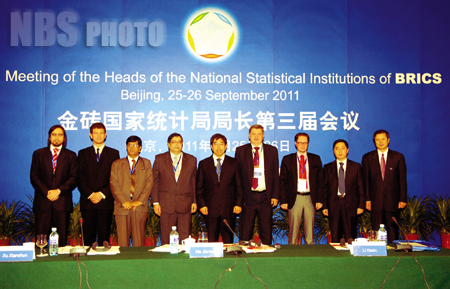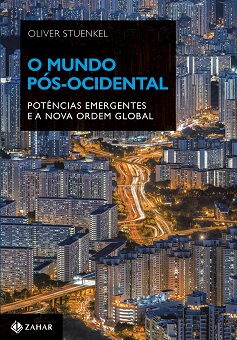
As Brazil is preparing to host the 6th BRICS Summit in Fortaleza in March 2014, it would be wrong to assume that only the Foreign Ministry is discussing ways to enhance cooperation between the five countries. At the Brazilian Institute for Geography and Statistics (IBGE), for example, a team is working on the next edition of the Joint Statistical Publication by BRICS Countries, an annual publication that includes economic, demographic and social indicators, and extensive information about employment, industry, transport and information technology. The publication is meant to increase mutual understanding and allow policy makers to identify in which areas BRICS countries are facing common challenges.
Cooperation between the BRICS’ statistical institutes is not new. The first encounter took place in February 2010 in New York on the sidelines of a UN Statistical Committee meeting. In the same year, the Second Meeting of the heads of the national statistical offices of Brazil, China, India and Russia took place in Brazil (November 29 to December 1, 2010). There, they agreed on the general framework and guiding principles of the first publication in 2011. The 2nd BRICS Summit in Brasília in April 2010 can thus be seen as a starting point of intra-BRICS cooperation in the realm of statistics.
Since then, meetings occur twice per year. At the end of each year, a meeting takes place to define the scope of the next publication. A few months later, prior to the BRICS Leaders Summit, a second meeting takes place to discuss technical issues, largely about how to harmonize national statistics to make them comparable. Each new publication is presented to the heads of state and government at Leaders Summit.
The BRICS’ attempts to harmonize their national statistics are part of a global, UN-led process towards harmonization, so the emerging power grouping is far from unique in that respect. Brazil, for example, is seeking to align its statistics within both the Americas and Mercosur, the latter of which has advanced most.
Aligning statistical data about each country’s socio-economic data may seem insignificant, but it can be understood as yet another small step towards strengthening South-South relations and helping BRICS governments to strengthen multi-level interaction. At the same time, suggestions that cooperating in this field may represent the first step towards creating an “OECD of the South” seem misplaced. The OECD and the BRICS may be similar in that they both seek to provide a platform to compare policy experiences, seek answers to common problems and identify good practices. Yet the OECD also attempts, at times quite successfully, to co-ordinate domestic and international policies of its members, something that the BRICS grouping does not do. While data is shared ever more widely, there is no surveillance mechanism, and nor are research methods discussed.
The general expectation is that during the next meeting of the heads of national statistical institutions of BRICS, to take place in late 2013 in South Africa, participants will decide to expand the scope of the next publication even further. This will increase the chance to identify potential for cooperation, for example in areas such as agriculture, where Brazil is a world leader.
Read also:
Understanding intra-BRICS cooperation: The case of tax administration
Does intra-BRICS cooperation make sense? The case of public health
China Development Bank: A model for the BRICS Bank?
Photo credit: NBS PHOTO








